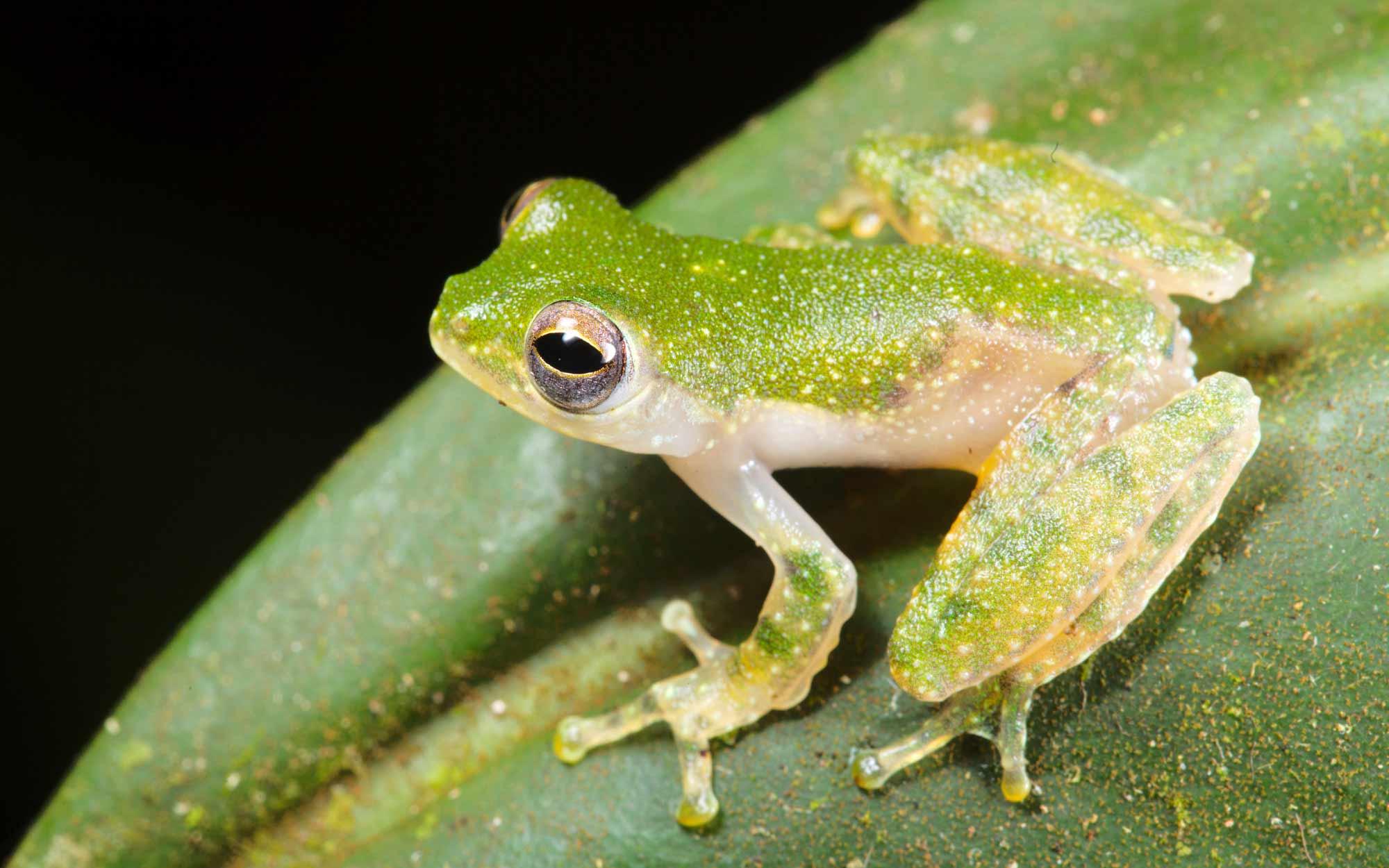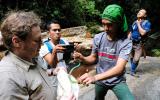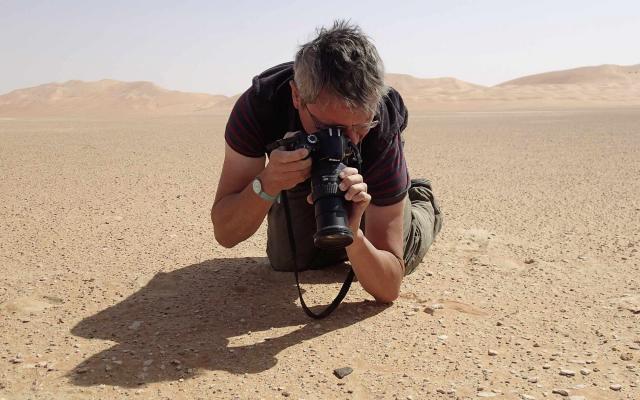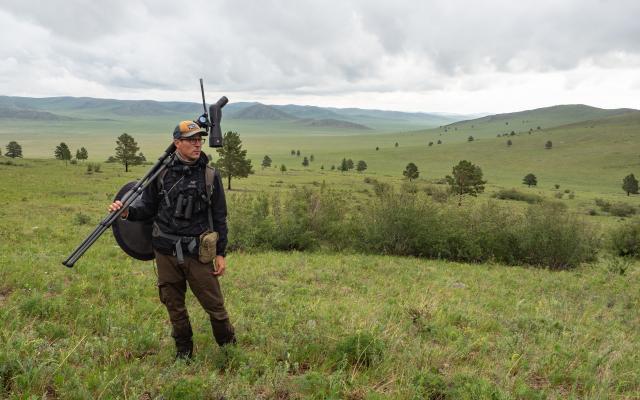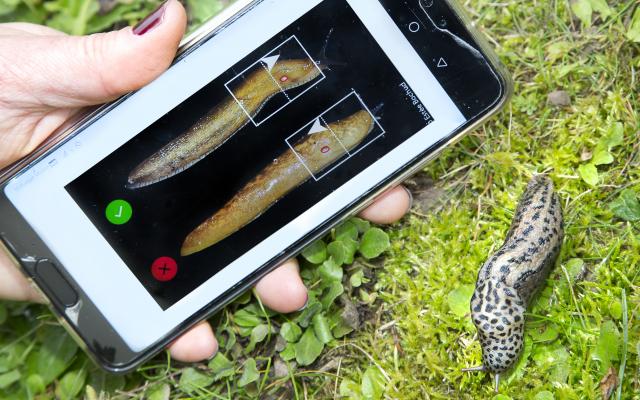Take a tropical climate where the average temperature is 27 degrees all year round, the humidity over 80 percent and the annual precipitation around 4000 millimetres. Combine it with an abundance of leeches, insects, poisonous spiders and snakes. Does this sound like the kind of place you'd like to work? Stefan Hertwig, head of the Vertebrate Division and herpetological curator at the Natural History Museum Bern (NMBE), is so passionate about his fieldwork in the rainforest of Borneo that he takes these conditions in his stride. Hertwig, who is originally from Germany, spends four to five weeks at a time on the island helping students and scientists from the University of Bern, the Malaysian universities Kota Kinabalu and Kuching, and Hamburg University's Museum of Zoology to collect frogs, toads and tadpoles from a range of habitats. "The aim of the work we're doing is to draw up as complete an inventory as possible of Borneo's amphibian species and their larvae," he explains. The Frogs of Borneo project began in 2006, and the amount of material which has been collected since is impressive. Several thousand specimens have been scientifically documented and their habitats investigated.
The highs and lows of fieldwork
Before an expedition can set out into the rainforest, there are various bureaucratic hurdles that need to be overcome. The preparations for a trip start months in advance with the quest to obtain the necessary permits. This involves countless e-mails and endless form-filling, but still doesn't stop Stefan Hertwig having to spend the first few days on Borneo running from office to office to shake hands and fill in even more forms. However, as he has got to know many of the relevant officials personally over the years, and now has local colleagues to put in a good word for him, the procedure is not as long or as nerve-wracking as it was in the early days of the international project.
Getting to the often remote areas where the research is to be conducted is not always straightforward either. The scientists spend many uncomfortable hours in off-road vehicles, bumping along hair-raising tracks. Sometimes they have to trek on foot for days on end over hugely challenging terrain, often carrying up to 20 kilos on their backs. None of this is made easier by the tropical climate, not to mention the biting insects, spiders and poisonous snakes.
In 2017, an expedition took Hertwig and his team to the mountains of the Maliau Basin. As in previous years, they had to rely on the help of local guides and porters. "There was no shortage of adventures," Hertwig recalls: "steep ascents up shaky ladders, nasty toe burns caused by bombardier beetles in our socks, the excruciating sting of a night wasp, and millions of leeches along the way..."
The frog expeditions to Borneo's rainforests involve many sleepless nights. As soon as it gets dark, the researchers set out in teams of two to look for nocturnal amphibians. If they come across one, they take photos and, if necessary, capture the animal and take it back to base. These nightly collecting trips often last up to seven or eight hours. Back at camp, the scientists take just a short nap before getting up again to photograph, document and prepare their specimens. This is followed by more fieldwork. After dinner, it's back into the rainforest.
Work in the laboratory
Much of the research work associated with the project takes place in the laboratories of the NMBE, Kuching University and the Institute of Zoology in Hamburg, where the frogs are measured carefully and subject to genetic investigation so that the scientists can establish whether their specimens, which often look very similar, are actually different species. This process is complex and time-consuming, and doesn't always result in a spectacular discovery. However, after the expedition which took place in the autumn of 2016, genetic tests on a stream toad just 2.5 cm in length revealed that the dainty creature was indeed a hitherto unknown species. The toad was given the name Ansonia teneritas due to its slender build (tener is the Latin for delicate).
The research project Frogs of Borneo has brought around 40 undescribed species to light so far, but Hertwig estimates that the number yet to be discovered is much higher still. "There are countless frogs and toads in the tropics - and some of them only occur in one single stream, on one mountain peak or in wetlands with particularly rare vegetation."
Future expeditions
The Frogs of Borneo project may have been underway for more than a decade, but the end is not in sight yet. The biological diversity of the world's third largest island is immense, and the number of species which remains to be described is vast. Moreover, researchers still have a lot to learn about the lifestyle and distribution in the tropics even of species which are already known to science. Unanswered questions include why there are so many species in the tropics which have such tiny habitats, and so many species which look so similar to each other. Stefan Hertwig and his team of scientists hope to fill as many gaps in our knowledge as possible in the coming years, but are aware that they are running a race against time. As in the Amazon, the environment in Borneo is being destroyed at an alarming rate. Deforestation has been taking place for decades, with rainforest being cleared to make way for palm oil production. "60 years ago, Borneo was completely covered by rainforest. Nowadays you fly for hours over oil palm plantations," reports Hertwig. Palm oil is contained in many of the products we use on a daily basis.
Rare finds
- Red Hot Chilli Pepper (Calluella capsa): only two specimens of this frog have been found so far, and one of them was dead on a road.
- Black Widow (Ansonia vidua): the four black toads discovered on Mount Murud were unusual for several reasons - one being that there was not a single male among them. "We normally discover male amphibians much more frequently than females - because they croak," explains Hertwig.
